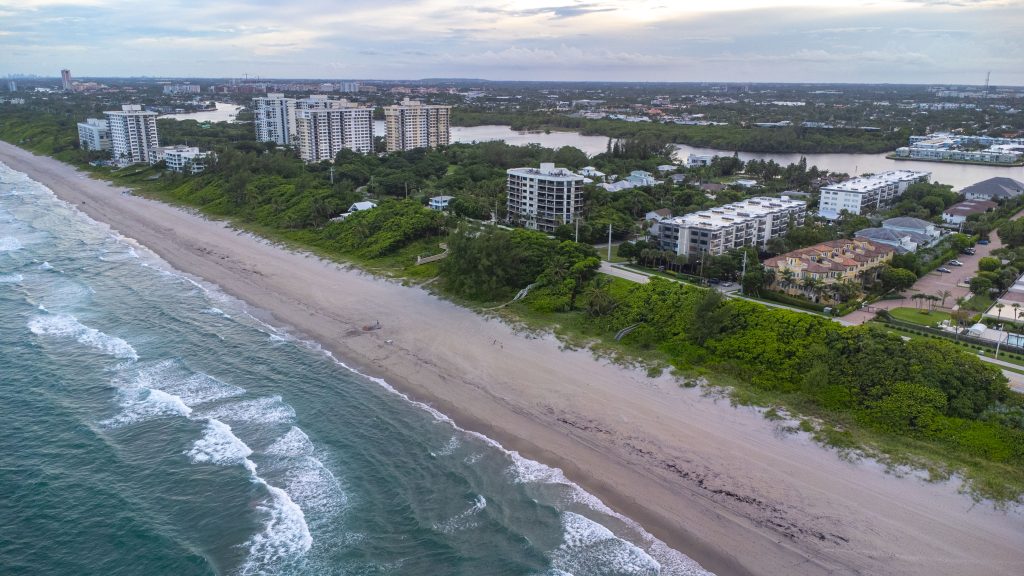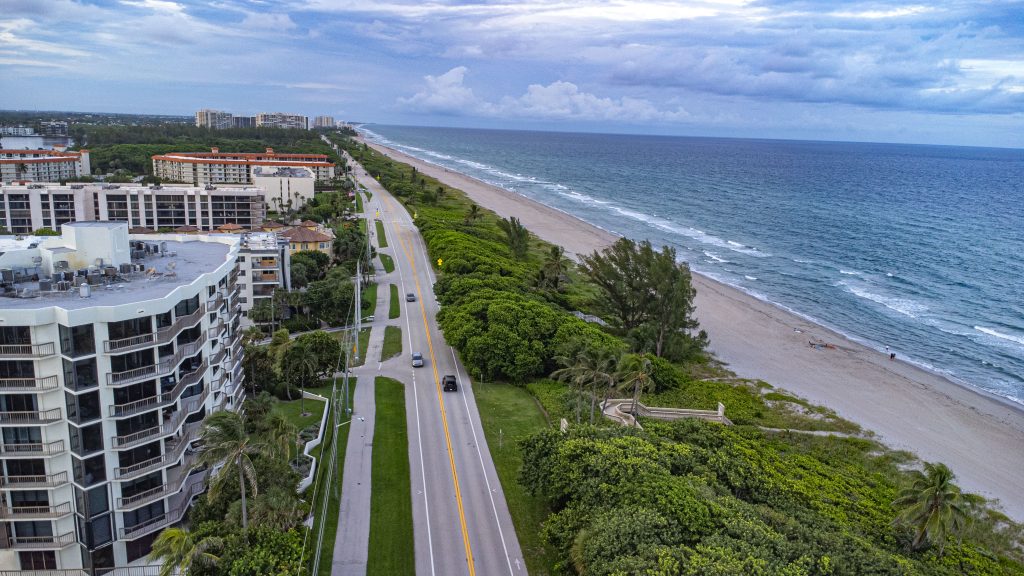The Boca Raton Environmental Board voted unanimously last week to deny a recommendation for approval to the city council of an application by a property owner to develop an oceanfront property with a scaled-back version of a project that had previously led to litigation. The matter will now go to the governing body, which has the final say. (Note: If the video detailing the location of the project is not visible, visit this page or disable ad blockers.)
The proposal for 2600 N. Ocean Boulevard (A1A) has been reduced from a four-story duplex to a single-family home, however testimony from professionals representing the property owner did not sway members of the board. While the board’s recommendation carries weight in terms of influence, it does not legally condemn the project since the ultimate decision-making authority for approval is the city council.
First proposed in 2016, the home would be built seaward of the Coastal Construction Control Line where development is normally prohibited due to environmental concerns. But the property was one of several that was never preserved when Boca Raton adopted an initiative to purchase oceanfront properties in 1960s and 1970s, leaving it in private hands. Its boundaries pre-date the existence of the line, as well as the zoning ordinances which govern the property today. Despite its history, in order for the private owner, Azure Development, of Delray Beach, to build on the parcel, the city council must approve a variance allowing construction to move forward east of the line.
After a protracted series of court hearings which ultimately resulted in a finding that the city did not turn over private communications from the personal social media accounts of officials on the project under the state’s Sunshine Law – as well as an indication from a circuit court judge that taxpayers would foot Azure’s legal bill in excess of $1 million – the city council unanimously adopted a settlement that will grant Azure a fresh hearing on the proposal now that all of the documents are in the hands of both parties. The settlement also sets a framework for how the hearing should be conducted, and exempts the city from reimbursing Azure for its attorney and professional fees should the variance be approved.
The first step was a hearing before the Environmental Board, which drew professionals representing the applicant, as well as several objectors, mainly from the nearby Yacht and Racquet Club of Boca Raton, which owns the undeveloped beach north of the proposed home. The hearing began with skepticism on the part of Board President Rick Newman, who questioned whether the reduction in scope of the project was intended to bolster the application.
“Are we supposed to take into account that they made this change?” Newman asked. “That it should be better, somehow, because of that change? If they had asked for a 1,000 foot condo to be put up there and then changed it to a one story house, then the numbers would be a thousand times better. Is it to show that they made a good faith effort to make the project better?”
Brandon Schaad, the city’s Director of Development Services, said the board was tasked with judging the project on its environmental merits, though the context of the case makes the changes in scope relevant to the board’s determination.
“The reason for the comparison is that this is the same application that was previously made by this board … the court told us to reconsider and sent it back for reconsideration,” he explained. “It’s relevant in the sense that this is how the application has changed since the last time it was heard.”
The changes are significant, according to William Stoddard, an engineer representing the property owner.
Modifications from the original plan, introduced in 2019, reduces the building footprint from 3,080 square feet to 2,776 square feet; eliminates more than half of the building area, from 14,270 square feet to 6,931 square feet; reduces the height from 49 feet to 38 feet; and significantly drops impervious coverage from 6,644 square feet to 2,776 square feet.
Additionally, a ground-level pool was eliminated and moved to the roof, while the driveway will be elevated over the dune line so its integrity will not be disturbed.
“One of the most important things to see is the dune profile – we’re retaining that dune profile, we’re not changing it,” said Stoddard. “The building is being built with that existing profile and you can see the driveway is pile-supported for access to the garage.”
Additionally, Stoddard said, a plethora of invasive plants will be removed and replaced with native species to restore the beachfront.
“The design team worked closely with the city staff and the Department of Environmental Protection, and we spent five years of collaboration going back and forth to come up with a design that was environmentally sensitive and compatible with this area,” he said. “There are no beach level decks, no decks at the ground level, we’ve moved the swimming pool up to the roof.”
Despite the promises of a more environmentally-friendly project, the board voted 4-0 against recommending the variance to the city council. The city’s building staff, however, remains in support of the scaled-down version of the project, leaving the city council with a major decision to make, especially with millions of dollars in legal fees at stake.
The council has not yet published a date on which the application will be heard.

Follow Us on Facebook

Police, Fire & Courts
Apple Store Altercation Leads to Boca Raton Man’s Arrest











